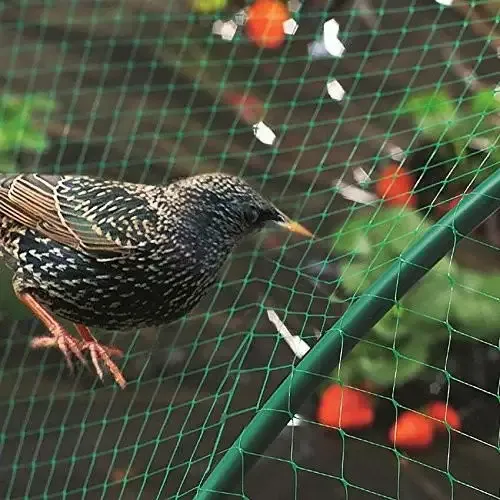-
 Afrikaans
Afrikaans -
 Albanian
Albanian -
 Amharic
Amharic -
 Arabic
Arabic -
 Armenian
Armenian -
 Azerbaijani
Azerbaijani -
 Basque
Basque -
 Belarusian
Belarusian -
 Bengali
Bengali -
 Bosnian
Bosnian -
 Bulgarian
Bulgarian -
 Catalan
Catalan -
 Cebuano
Cebuano -
 China
China -
 Corsican
Corsican -
 Croatian
Croatian -
 Czech
Czech -
 Danish
Danish -
 Dutch
Dutch -
 English
English -
 Esperanto
Esperanto -
 Estonian
Estonian -
 Finnish
Finnish -
 French
French -
 Frisian
Frisian -
 Galician
Galician -
 Georgian
Georgian -
 German
German -
 Greek
Greek -
 Gujarati
Gujarati -
 Haitian Creole
Haitian Creole -
 hausa
hausa -
 hawaiian
hawaiian -
 Hebrew
Hebrew -
 Hindi
Hindi -
 Miao
Miao -
 Hungarian
Hungarian -
 Icelandic
Icelandic -
 igbo
igbo -
 Indonesian
Indonesian -
 irish
irish -
 Italian
Italian -
 Japanese
Japanese -
 Javanese
Javanese -
 Kannada
Kannada -
 kazakh
kazakh -
 Khmer
Khmer -
 Rwandese
Rwandese -
 Korean
Korean -
 Kurdish
Kurdish -
 Kyrgyz
Kyrgyz -
 Lao
Lao -
 Latin
Latin -
 Latvian
Latvian -
 Lithuanian
Lithuanian -
 Luxembourgish
Luxembourgish -
 Macedonian
Macedonian -
 Malgashi
Malgashi -
 Malay
Malay -
 Malayalam
Malayalam -
 Maltese
Maltese -
 Maori
Maori -
 Marathi
Marathi -
 Mongolian
Mongolian -
 Myanmar
Myanmar -
 Nepali
Nepali -
 Norwegian
Norwegian -
 Norwegian
Norwegian -
 Occitan
Occitan -
 Pashto
Pashto -
 Persian
Persian -
 Polish
Polish -
 Portuguese
Portuguese -
 Punjabi
Punjabi -
 Romanian
Romanian -
 Russian
Russian -
 Samoan
Samoan -
 Scottish Gaelic
Scottish Gaelic -
 Serbian
Serbian -
 Sesotho
Sesotho -
 Shona
Shona -
 Sindhi
Sindhi -
 Sinhala
Sinhala -
 Slovak
Slovak -
 Slovenian
Slovenian -
 Somali
Somali -
 Spanish
Spanish -
 Sundanese
Sundanese -
 Swahili
Swahili -
 Swedish
Swedish -
 Tagalog
Tagalog -
 Tajik
Tajik -
 Tamil
Tamil -
 Tatar
Tatar -
 Telugu
Telugu -
 Thai
Thai -
 Turkish
Turkish -
 Turkmen
Turkmen -
 Ukrainian
Ukrainian -
 Urdu
Urdu -
 Uighur
Uighur -
 Uzbek
Uzbek -
 Vietnamese
Vietnamese -
 Welsh
Welsh -
 Bantu
Bantu -
 Yiddish
Yiddish -
 Yoruba
Yoruba -
 Zulu
Zulu
Exploring Innovative Solutions Through the Mist Network Framework
Understanding and Implementing Mist Nets in Ecology
Mist nets are a fundamental tool in ecological research, especially in the study of avian species. These fine, meshed nets can capture birds without causing them significant harm, allowing researchers to study various aspects of their biology and behavior. As scientific inquiries deepen, the use of mist nets has been refined, adhering to ethical standards that prioritize the well-being of the captured animals.
One of the primary purposes of mist nets is to gather data on bird populations. By deploying these nets in strategic locations, researchers can quantify the number of birds in an area, monitor their health, and track their migration patterns. This information is invaluable for understanding species diversity and the impacts of environmental changes. For instance, conservationists can use mist net data to identify declining species and implement measures to protect their habitats.
The design of mist nets is relatively simple yet effective
. Made from fine, strong synthetic fibers, these nets blend seamlessly into the environment, making it difficult for birds to see them. They can vary in size and mesh density, depending on the target species and research goals. Once captured, birds are typically held in specialized bags that minimize stress before being processed. This processing includes identifying species, measuring, weighing, and banding the individuals for future tracking. The whole process is designed to be quick and efficient, reducing the time birds are kept in captivity.mist net

Ethics play a crucial role in the application of mist nets. Researchers must obtain the necessary permits and follow guidelines set out by ethical boards. These guidelines ensure that bird welfare is prioritized and that research is conducted responsibly. Such protocols may include minimizing the duration of captures and ensuring that nets are checked frequently. This careful attention to ethical practices not only fosters trust within the scientific community but also with the public, who may be concerned about the impact of research activities on wildlife.
Moreover, mist nets can also serve educational purposes. They provide a hands-on opportunity for students and community members to engage with wildlife biology. By participating in mist netting activities, individuals learn about bird identification, the importance of data collection, and the conservation efforts necessary to protect avian species. Such initiatives can inspire the next generation of ecologists and conservationists as they witness the delicate balance of nature in real-time.
Despite their advantages, mist nets are not without limitations. Capturing birds is labor-intensive and requires field skills, proper training, and dedication. There is also the potential for non-target species to become unintentionally caught, including bats or small mammals. Therefore, researchers must continuously assess their methods and consider alternative techniques, such as automated recording devices, which can complement mist netting efforts.
In conclusion, mist nets are an essential tool in ecological research, particularly in avian studies. Their ability to capture birds humanely facilitates critical data collection that informs conservation efforts and enhances our understanding of wildlife dynamics. As research methodologies evolve, the integration of mist nets with modern technology and ethical practices will ensure that the benefits of such methods continue to support ecological research and conservation efforts for years to come.
-
Shipping Plastic Bags for Every NeedNewsJul.24,2025
-
Safety Netting: Your Shield in ConstructionNewsJul.24,2025
-
Plastic Mesh Netting for Everyday UseNewsJul.24,2025
-
Nylon Netting for Every UseNewsJul.24,2025
-
Mesh Breeder Box for Fish TanksNewsJul.24,2025
-
Expanded Steel Mesh Offers Durable VersatilityNewsJul.24,2025











